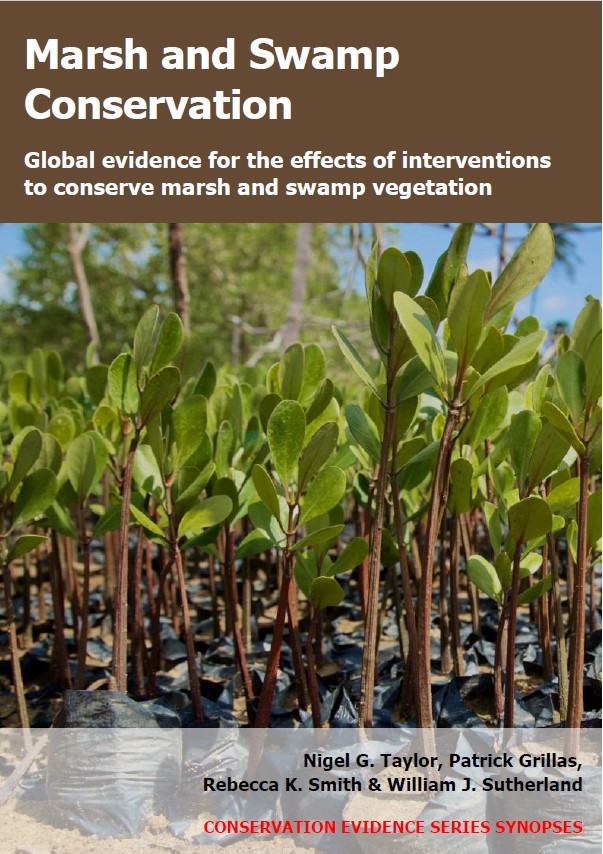Add inorganic fertilizer before/after planting trees/shrubs: freshwater wetlands
-
Overall effectiveness category Unknown effectiveness (limited evidence)
-
Number of studies: 2
View assessment score
Hide assessment score
How is the evidence assessed?
-
Effectiveness
40% -
Certainty
30% -
Harms
1%
Study locations
Supporting evidence from individual studies
A replicated, randomized, controlled study in 1992 in a freshwater marsh in Louisiana, USA (Myers et al. 1995) found that adding fertilizer increased growth of planted baldcypress Taxodium distichum seedlings. Over one growing season, fertilized seedlings grew more than unfertilized seedlings in both diameter (fertilized: 0.76 cm; unfertilized: 0.41 cm) and height (data not reported). Fertilizer had a bigger effect on diameter growth for seedlings within plastic guards than without (data not reported), but had a similar effect on diameter growth whether vines were cleared (fertilized seedlings grew 0.31 cm more than unfertilized) or not (fertilized seedlings grew 0.33 cm more than unfertilized). Methods: In January 1992, four hundred baldcypress seedlings were planted into a marsh – with the aim of restoring the swamp that was logged around 80 years previously. Of the 400 seedlings, 200 random seedlings were fertilized (28 kg/ha time-released Osmocote NPK) and 200 were not. An equal number of fertilized and unfertilized seedlings received additional treatments: plastic guards as protection from herbivores and/or clearing competing vines. Seedling diameter and height were measured at planting (January 1992) and after one growing season (October 1992).
Study and other actions testedA replicated, paired, controlled study in 2013–2015 in an ephemeral freshwater marsh in Florida, USA (Dreschel et al. 2017) reported that adding fertilizer typically had no significant effect on tree sapling height or diameter. Three species were planted: pond apple Annona glabra, red maple Acer rubrum, and strangler fig Ficus aurea. After two years, the height of fertilized saplings did not significantly differ from unfertilized seedlings in six of six comparisons (fertilized: 97–151 cm; unfertilized: 80–127 cm). The same was true for sapling diameter in four of six comparisons (for which fertilized: 24–37 mm; unfertilized: 14–20 mm). In the other two comparisons, fertilized pond apple saplings were thicker (62–63 mm) than unfertilized saplings (45 mm). Saplings were 49–112 cm tall and 11–27 cm thick when planted. Methods: The study was testing methods to restore tree islands in marshy areas. In October 2013, fifteen nursery-reared saplings of each species were planted into peat bags (1 sapling/bag). The bags were punctured with multiple holes then floated on the marsh. Ten saplings/species were fertilized with Vigoro® Tree and Shrub fertilizer spikes (five saplings with one spike, five saplings with two spikes). Five saplings/species were not fertilized. The size of surviving seedlings was measured for up to two years after planting.
Study and other actions tested
Where has this evidence come from?
List of journals searched by synopsis
All the journals searched for all synopses
This Action forms part of the Action Synopsis:
Marsh and Swamp Conservation
Marsh and Swamp Conservation - Published 2021
Marsh and Swamp Synopsis





)_2023.JPG)














